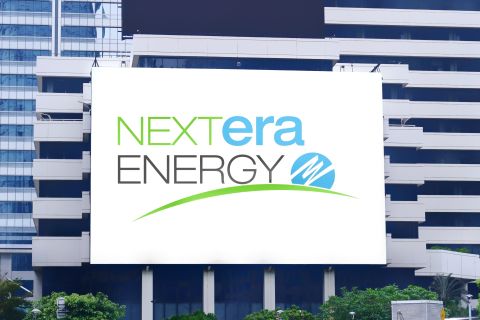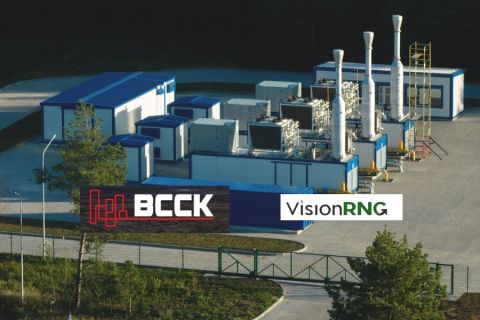Presented by:

Establishing diversity, equity and inclusion (DEI) practices in the workplace has become a greater focus for the energy industry. In recent years, the energy sector has developed mentoring programs and leadership training courses in an effort to recruit and retain more women and people of color.
The culmination of these efforts has awarded the industry with improved performance, greater innovation, and new perspectives and approaches to day-to-day business challenges. Realizing the value of diverse teams, industry titans Baker Hughes, Schlumberger and ChampionX have leveraged diversity and inclusion programs to cultivate talent and advance inclusivity in the workplace.
Aspire, impact and cultivate
U.S.-based Baker Hughes believes people are central to taking energy forward. To further cultivate its workforce, the company designed a trifold of leadership and training programs—Aspire, Cultivate and Impact—focused on growth, challenge and understanding.
“We understand that innovative minds, engaged employees and diverse perspectives are needed to meet the world’s pressing energy challenges,” the company said in its 2020 Corporate Responsibility Report. “There is no path to a new energy future that does not include diversity, equity, and inclusion.”
Aspire is a two-year rotational program offered to recent graduates and early career professionals aimed at guiding young talent through career-shaping experiences.
The program utilizes challenging assignments, learning plans and global cross-functional projects to grow leadership skills among entry-level workers. The rotational structure provides a job shadowing opportunity through various departments such as field engineering, digital technology, sales and commercials, and human resources.
The digital technology track trains graduates on cloud computing, cybersecurity and risk, data science, machine learning, and process frameworks Agile and Scrum. While the participants gain technical skills and capabilities through the rotational format, they have the opportunity to obtain certifications in their desired area of interest.
“This horizontal movement helps build the right talent on a long-term basis,” said Loretta Bersani, director of talent development and training for oilfield equipment with Baker Hughes.
The program also conducts roundtable discussions with senior leaders to help graduates draw from their experience and gain insight on how they can build their career.
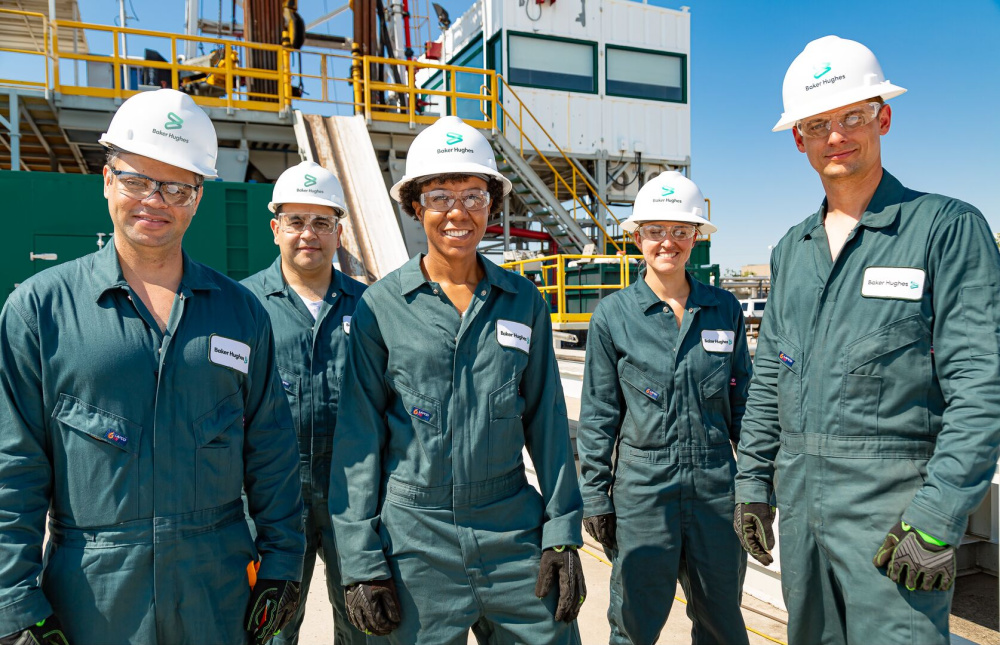
Cultivate, a one-year non-rotational program, became a product of this mindset shift at Baker Hughes. The focus is put entirely on the progression of high-potential female leaders through immersive learning experience and one-on-one mentoring.
“Historically as an industry, we’ve struggled to have women staying in the industry,” Bersani said. “But we’ve had great success in terms of increasing the number of women in our executive leadership team, but it is still a journey so we can never stop.”
Cultivate pairs the women with senior leadership to build their career plans and discuss their career ambitions in depth.
“The women are able to meet the leaders in different fields and see how they can build their career,” she said. “We give them a lot of support to get to the next level.”
In 2020, 94 women graduated from the Cultivate program and an additional 101 women joined the next Cultivate class and are scheduled to graduate in 2021.
“We continue to build,” she said. “We hope that the more women we attract, the more they can have a successful career with us and we can all grow collectively.”
For mid-career employees looking to enter the executive pipeline, Impact is a three-year accelerator program geared toward prepping high-potential talent for senior-level positions. The program cycles the employees through different tracks that broaden their skills and build on their existing functional expertise.
“Often as women we’re very active with day-to-day responsibilities, but we rarely take the time to reflect on our career,” she said. “This type of program is an opportunity for the employee to reflect and network with their peers. It connects women with other women that may have endured the same challenge, so they may understand their journey better.”
The initiation of these leadership development programs supported stronger hiring rates for women, moving from 22% in 2019 to 27% in 2020. It also contributed to the company’s overall increase of employees who identify as female, which moved from 17% in 2019 to 18% in 2020, the company reported.
“We understand that continued progress will require an ongoing commitment from our organization,” the company stated in its Corporate Responsibility Report.
In 2020 these leadership development programs were 60% women. Baker Hughes also empowered leaders to embed DEI into the hiring process through the use of a new recruiting tool called RoleMapper. It is a framework designed to develop diverse and inclusive vacancy postings that attract the widest possible pool of qualified and diverse talent, according to the company.
The COVID-19 pandemic altered the program model in 2021, but the organization pivoted to a virtual setting with 6,155 employee participants, logging an average of 1.27 hours per participant. More than 29% of the employees completed performance reviews with their managers and 440 employees completed the enterprise talent development programs.
“The success of the company comes from bringing in different perspectives and having people that can be their true self at work,” Bersani said. “So we strive to build an inclusive culture to make sure that we have representation in our workforce that reflects society.”
Baker Hughes intends to continue prioritizing DEI metrics into its talent strategy to further institute behaviors in the energy sector that fosters an inclusive work culture and society.
“We know that advancing DEI is about more than implementing activities and programs,” the company stated in its Corporate Responsibility Report. “It’s about embedding the right behaviors to grow an inclusive culture. We seek to align our organization with the behaviors it will take to deliver on our strategy. These same behaviors will help us advance our culture—one that prioritizes trust, open communication, appreciation of differences and continuous learning.”
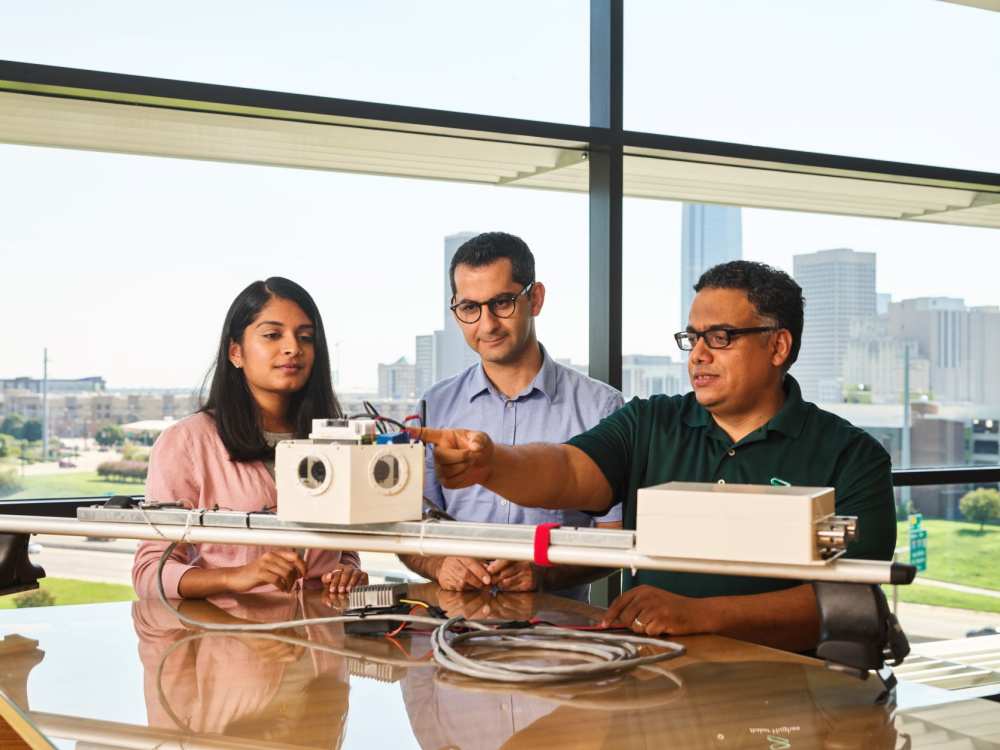
Leadership development program
Millennials are shaping the workplaces of today and the future, and they’re placing an emphasis on cultural representation across every industry. Culture is considered to be the underlying value that dictates how we behave, the reason for certain beliefs and in part what gives identity.
Cultural diversity refers to a melting pot of practices, values, traditions and beliefs in the workplace, and it encourages an environment of inclusion. When successful, cultural diversity is mirrored in leadership roles. However, this depends heavily on the practices leveraged during the hiring process.
Schlumberger’s commitment to creating a multicultural workforce dates back to the 1960s when it began implementing national, cultural and gender diversity policies to solidify its position as a leader in the technology space. Today the company has succeeded in drawing in talent from non-western and emerging countries at all levels of its workforce.
“We never know where the best ideas are going to come from, so we cast our net as wide as possible to maximize the diversity of our talent and thoughts,” said Leila Hamza, Schlumberger’s diversity and inclusion director. “We’ve put in place programs to make nationality diversity and gender diversity part of the culture.”
Schlumberger began its leadership development program to help foster a global mindset among prospects and to build world-class leaders from within. The company utilizes case studies and experimental training scenarios to strengthen inclusive behavior among its employees.
“To get a global mindset, you have to enable that with training, practice and role modeling,” Hamza said. “It is one of the main requirements for a Schlumberger leader because we want someone that has been exposed to people from different cultures and different backgrounds. That type of mindset helps you understand what it is like to operate in a global environment.”
All of the employees are given the opportunity to draft their annual training and development plans with their managers, outlining their career intentions for the year. The employees receive performance appraisals each year to evaluate their development and determine their trajectory in the company.
“Your performance determines your advancement, and your potential will determine where you go in the company,” she said. “More than 90% of our leaders were hired as young employees from university. Our leadership development program helps us to ensure a global growth mindset.”
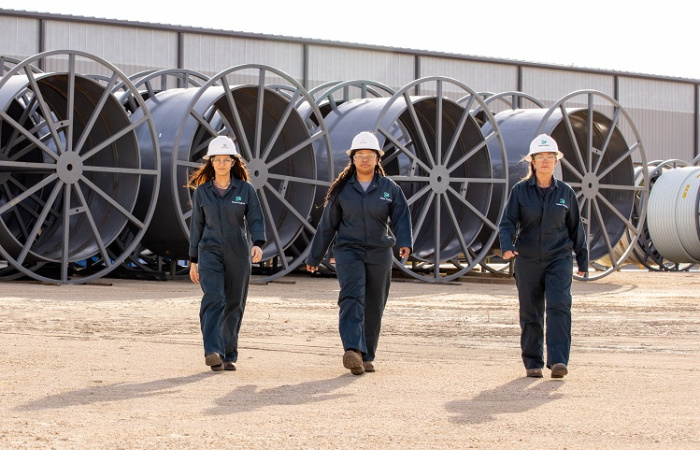
One aim of the program is to advance the company’s diversity strategy, which is based on three pillars: nationality, gender diversity and diversity beyond gender and nationality.
The nationality pillar allows the organization to achieve a deeper threshold of diversity. Gender caters to employing more women in the workplace, which Schlumberger has been doing for more than 50 years. The beyond gender and nationality pillar is about all the other groups that aren’t always measurable but implied like LGBTQ+ and people with disabilities, according to Hamza.
“Right now, we’re working on taking our inclusion efforts a little bit further, even though it was implied by having people from diverse backgrounds working together, we want to be more intentional about it going forward,” she said regarding the third pillar.
Schlumberger employs roughly 85,000 people of more than 160 nationalities operating in over 120 countries, according to the company website. The company’s board of directors comprises 10 directors—three seats being occupied by women, four are citizens of the U.S., and the others are citizens or have dual-nationality from countries including Norway, Argentina and the U.K., Canada, France, Russia and Saudi Arabia.
“One of our greatest strengths is the diversity of our workforce, with people of many nationalities and backgrounds working together and sharing common objectives,” the company said. “Schlumberger does not have a nationality that describes its culture but operates in a truly global manner throughout the world. As a company, we encourage fair employment practices worldwide and offer equal opportunities to all our employees.”
Additionally, the program features implicit bias training to ensure hiring managers aren’t perpetuating discriminatory behaviors that would hinder inclusivity.
“It’s critical that our recruiters receive implicit bias training,” Hamza said. “We have two fundamentals that we go by: we recruit where we work, which means we always recruit people that represent the cultures and the communities in which we operate. The second principle is that we promote from within.”
To truly be diverse, she said, it is important for the hiring managers to identify with candidates from different walks of life, considering the organization sources a significant number of its employees from colleges around the world.
“You have to be able to hire from a university in Malaysia just as you would hire from a university in Boston or New York,” Hamza said. “We want our recruiters to be able to hire from a diverse pool of candidates because we don’t want to miss out on high-potential contenders from universities that we may not have on our radar.”
She continued, “You want to challenge yourself because you will come into contact with ideas that are completely foreign to you. It is important to know how to lead an organization where there are a variety of customers with different needs and expectations.”
In 2020, 45% of the company’s STEM graduate hires were women. The candidates came from all disciplines of study and worked in field operations, applied research, engineering, manufacturing, business, sales, finance, legal and human resources, according to the company.
“Our recruiting strategy is based on a long-term vision,” the company said in its recent sustainability report. “We hire the best talent globally. Our investment in the accelerated development of our people—by exposing trainees to multiple experiences across a variety of locations and operations—helps us develop an agile workforce and the next generation of business leaders.”
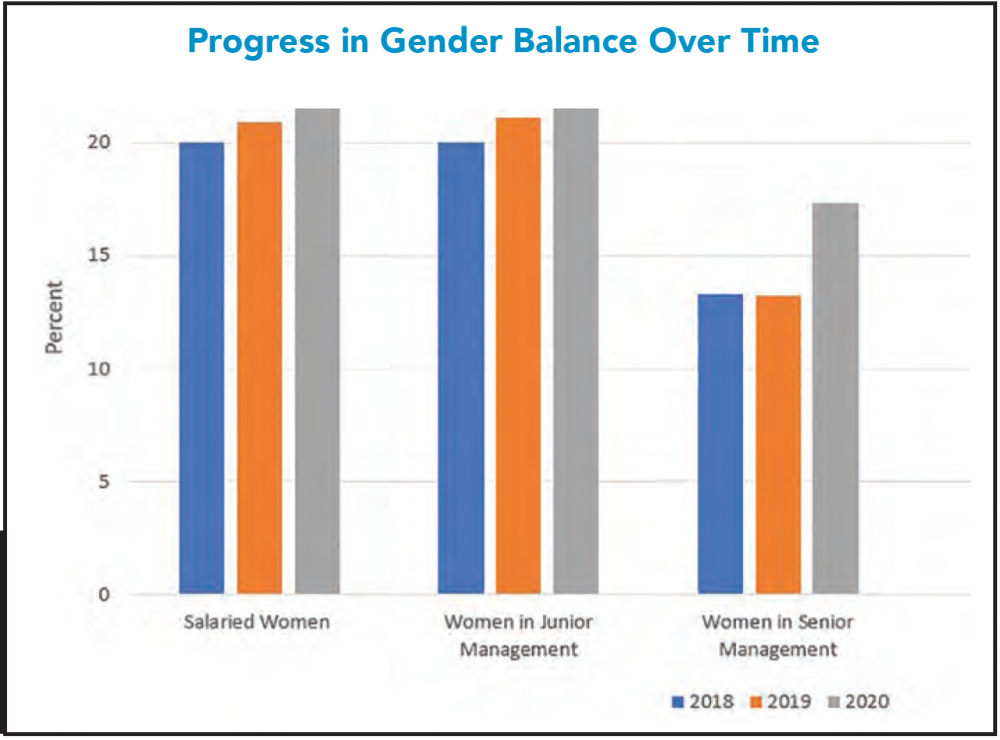
Gender balance
Since hiring its first female field engineer in 1978, Schlumberger remains dedicated to achieving gender balance in its workforce.
“We started our gender diversity efforts back when having women in the field was completely unheard of,” Hamza said.
In 1994 the company set a target to have women comprise 15% of its workforce by 2015. With the goal met, and with the company on track to meet the current 25% milestone, the latest target is to have women represent 30% of the workforce at all levels of the organization by 2030, according to Hamza.
“It seems like it’s a shy level of progress, but it is hard work,” she said. “It is a constant effort to be able to achieve that on all levels. It’s a really big task in today’s environment, but with all the measures we have in place, plus our programs, I believe we can attain an inclusion culture for women in the workplace.”
In a long-term community-focused initiative run independently by the Schlumberger Foundation, the Faculty of the Future program aims to accelerate women in STEM. The long-term goal is to strengthen the talent and capacities of the women that come from developing countries for the benefit of their local communities, regions and nations.
“We never know where the best ideas are going to come from, so we cast our net as wide as possible to maximize the diversity of our talent and thoughts.” — Leila Hamza, Schlumberger
Women are awarded fellowships for advanced research in STEM with the hopes of contributing to gender parity in the fields of science and technology. The fellows are expected to leverage their education to contribute to the economic, social and technological advancement of their home regions.
“We focus on countries where there is a big deficit in women in technical roles or leadership roles,” Hamza said. “We support their education, and then they go back to their home country with that knowledge. The goal is to help create an environment where women can have access to opportunities and help other women succeed, so really creating global role models.”
Since its launch in 2004, 770 women from 84 countries have received Faculty for the Future fellowships for doctoral and postdoctoral STEM research programs.
Recognize, inspire, share and engage
Energy companies rely on teams that are diverse and driven by the combined capabilities of people from all walks of life to achieve success. ChampionX Corp., which specializes in chemistry solutions and highly engineered equipment and technologies that help companies drill for and produce oil and gas safely and efficiently around the world, has uncovered the benefits of actively increasing the engagement and inclusion of its people.
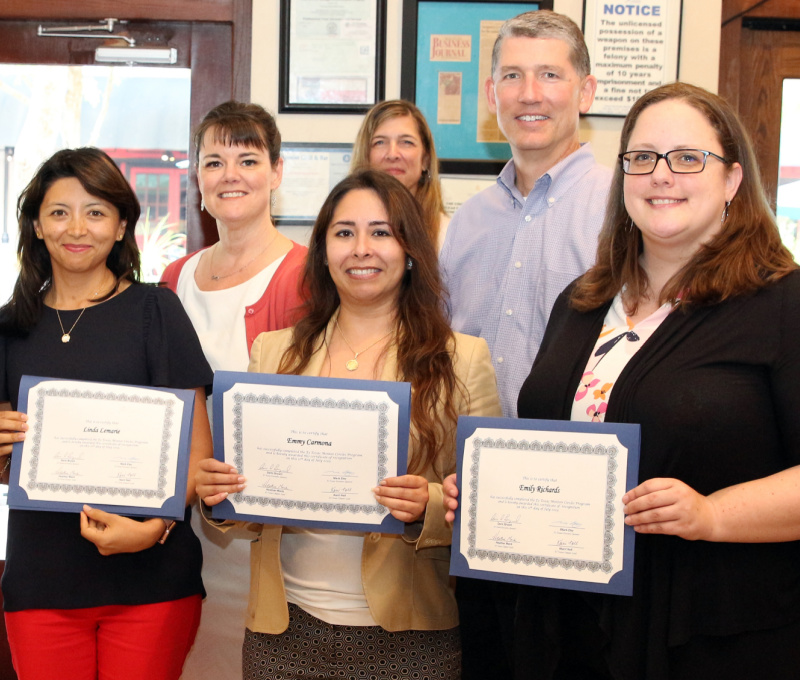
The company supports nine employee resource groups (ERGs) representing unique cultures, experiences, backgrounds and ethnicities. RISE (Recognize, Inspire, Share and Engage) is a gender diversity-focused ERG that was created by ChampionX to support the advancement of women within the company. RISE’s mission is to provide educational development tools, networking, opportunities for leadership and collaboration for women and male allies. The group’s vision is to grow the business and become an industry leader in gender equality by inspiring all employees to promote a culture of diversity and inclusion.
“We provide leadership opportunities for our members to gain experience in a safe space,” said Julie Fidoe, ChampionX director of marketing for production chemicals and RISE Western Hemisphere lead. “The goal is to not only help women become well-rounded professionals, but to also provide opportunities for all employees to grow and learn in ways that may not happen organically in their daily work.”
RISE has 10 chapters across North America, Europe, Asia, Africa and Latin America. Each RISE chapter is led by two co-leads and is supported by senior-level advocates as well as gender-diverse committees that recruit members, provide networking, mentoring and professional development events, and communicate and engage with employees.
Through the ERG, members may receive financial acumen training, career coaching or assistance on drafting their individual development plan, among other development opportunities. Past events include leadership panel Q&As, and external professional speakers have been brought in to discuss topics like building a personal brand, developing executive presence and maintaining resilience during change.
Some RISE chapters also offer mentoring circles—consisting of a small group of mentees and two mentors—with each group meeting regularly to discuss topics such as global leadership, teamwork, diversity and networking. The circles also serve as engagement platforms for employees to voice their opinions and share experiences.
“The advantage of the circle groups, as opposed to one-on-one meetings, is that they offer peer-to-peer mentoring and networking in addition to the insights gained from the senior leaders they’re paired with,” Fidoe said. “We’ve seen wonderful success stories of mentees growing exponentially while in the program. And, with the support of their mentors, they’ve often taken the next step into an expanded role or moved to a completely different department they would’ve never had the confidence to step into before.”
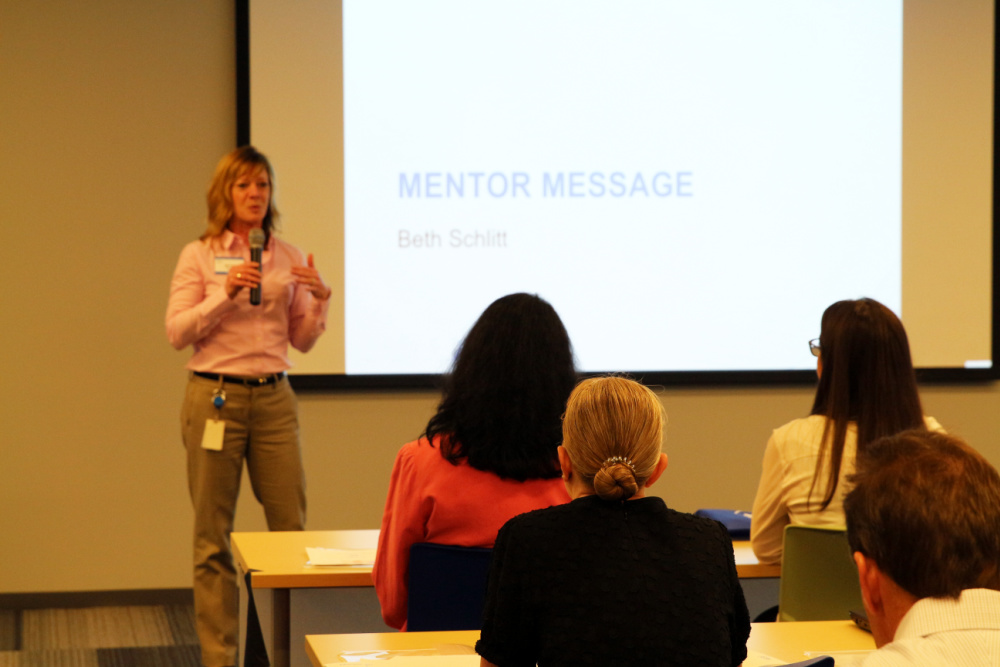
“The circle format creates a two-way street between the mentees and mentors,” said Leanne Hamilton-Thompson, ChampionX vice president of marketing. She serves as the RISE global lead and is a former mentor.
“I’d forgotten how much I learned throughout my career,” she continued. “Mentoring has allowed me to reflect back on my development while sharing my experiences and advice with others to support their progression.”
Her experience as a mentor helped her realize the need to expand the program globally to drive diversity of thought and inclusion of different cultural backgrounds.
“There may be lessons in our program that are culturally ideal for the U.S., but they don’t work as well in Latin American or Asia,” Hamilton-Thompson said. “By broadening it on a global scale, we gain cultural awareness and can integrate those learnings into every chapter of RISE.”
Moving forward, the company intends to build on the success of RISE to incorporate additional programs and other ERG chapters across its global organization.
Additionally, ChampionX recently launched a company-wide diversity and inclusion council, led by President and CEO Soma Somasundaram.
Recommended Reading
Solar Panel Tariff, AD/CVD Speculation No Concern for NextEra
2024-04-24 - NextEra Energy CEO John Ketchum addressed speculation regarding solar panel tariffs and antidumping and countervailing duties on its latest earnings call.
NextEra Energy Dials Up Solar as Power Demand Grows
2024-04-23 - NextEra’s renewable energy arm added about 2,765 megawatts to its backlog in first-quarter 2024, marking its second-best quarter for renewables — and the best for solar and storage origination.
BCCK, Vision RNG Enter Clean Energy Partnership
2024-04-23 - BCCK will deliver two of its NiTech Single Tower Nitrogen Rejection Units (NRU) and amine systems to Vision RNG’s landfill gas processing sites in Seneca and Perry counties, Ohio.
Clean Energy Begins Operations at South Dakota RNG Facility
2024-04-23 - Clean Energy Fuels’ $26 million South Dakota RNG facility will supply fuel to commercial users such as UPS and Amazon.
Romito: Net Zero’s Costly Consequences, and Industry’s ‘Silver Bullet’
2024-04-22 - Decarbonization is generally considered a reasonable goal when presented within the context of a trend, as opposed to a regulatory absolute.


